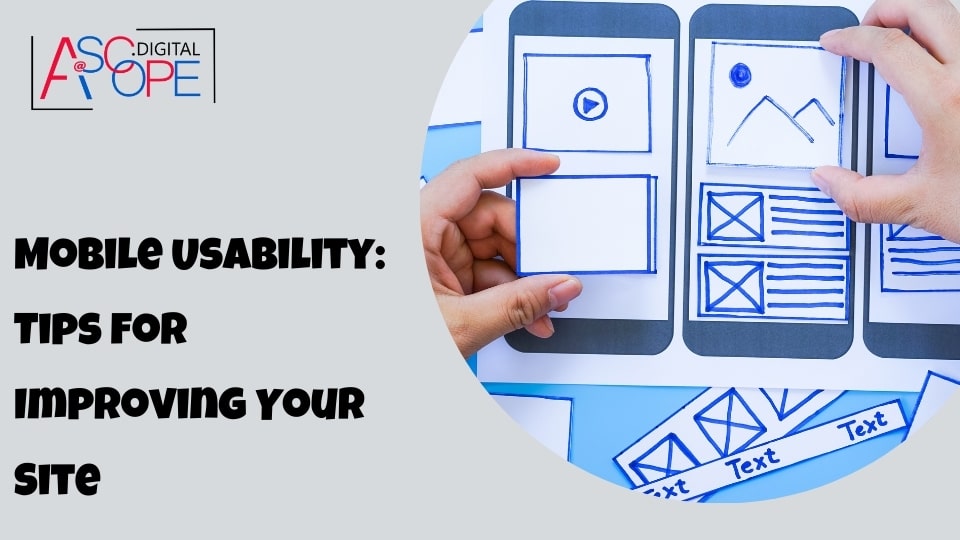In today’s digital landscape, mobile usability has become a crucial aspect of website development and optimization. With an increasing number of users accessing the internet via their smartphones and tablets, ensuring that your site is mobile-friendly is not just a luxury but a necessity. Mobile usability directly impacts user experience, search engine rankings, and ultimately, your site’s traffic and sales. In this comprehensive guide, we’ll delve into the best practices and tips for improving your site’s mobile usability, ensuring that your users have a seamless experience regardless of the device they use.
Understanding Mobile Usability
Mobile usability refers to how effectively users can interact with a website when accessing it from a mobile device. It encompasses various factors such as loading speed, navigation, readability, and overall design responsiveness. A mobile-friendly site adapts to different screen sizes, provides intuitive navigation, and ensures that content is easily readable without requiring excessive zooming or scrolling.
The Importance of Mobile Usability
The significance of mobile usability cannot be overstated. According to recent studies, over half of global web traffic comes from mobile devices. As such, search engines like Google have prioritized mobile-first indexing, meaning that the mobile version of your site is considered the primary version for ranking purposes. A poor mobile experience can lead to high bounce rates, lower search engine rankings, and a negative impact on your overall online presence.
Moreover, a mobile-friendly website enhances user satisfaction, which in turn fosters loyalty and encourages repeat visits. By providing a seamless mobile experience, you can capture a larger audience, reduce bounce rates, and improve conversion rates, thus, improving traffic and sales for your website. Read more on the other reasons why your website isn’t getting traffic.
Tips for Improving Mobile Usability
1. Implement Responsive Design
Responsive design is the cornerstone of mobile usability. It ensures that your website adjusts seamlessly to different screen sizes and orientations. By using flexible grids, layouts, and images, a responsive design provides an optimal viewing experience across all devices. This approach eliminates the need for separate mobile and desktop versions of your site, making maintenance easier and more efficient.
2. Optimize Loading Speed

Loading speed is critical for mobile usability. Mobile users are often on the go and have limited patience for slow-loading sites. To improve loading speed, consider the following strategies:
- Compress Images: Large images can significantly slow down your site. Use image compression tools to reduce file sizes without compromising quality.
- Minimize HTTP Requests: Reduce the number of elements on your page that require HTTP requests, such as scripts, images, and CSS files.
- Enable Browser Caching: Browser caching stores static files on a user’s device, allowing faster access on subsequent visits.
- Use a Content Delivery Network (CDN): A CDN distributes your site’s content across multiple servers worldwide, reducing latency and improving load times.
3. Simplify Navigation
Mobile users need to be able to navigate your site easily. Complex or cluttered navigation can frustrate users and lead to high bounce rates. Here are some tips for simplifying navigation:
- Use a Hamburger Menu: A hamburger menu is a compact, three-line icon that expands to reveal the site’s navigation options. It’s a popular choice for mobile sites as it saves space and keeps the interface clean.
- Prioritize Important Links: Ensure that the most important pages are easily accessible. Use clear, concise labels for navigation links.
- Implement a Search Bar: A search bar allows users to quickly find specific content without navigating through multiple pages.
4. Enhance Readability
Text readability is crucial for mobile usability. Ensure that your content is easy to read on smaller screens by following these guidelines:
- Use Legible Fonts: Choose fonts that are easy to read on mobile devices. Avoid overly decorative fonts that can be hard to decipher.
- Appropriate Font Size: Ensure that your font size is large enough to be read without zooming. A minimum of 16 pixels is recommended for body text.
- Short Paragraphs: Break up long paragraphs into shorter, more digestible chunks. This improves readability and keeps users engaged.
- Sufficient Line Spacing: Adequate line spacing prevents text from appearing cramped and makes it easier to read.
5. Optimize Forms for Mobile
Forms are a common feature on websites, whether for contact, subscriptions, or checkout processes. Optimizing forms for mobile devices enhances usability and reduces the likelihood of user abandonment. Consider the following tips:
- Simplify Forms: Only ask for essential information to reduce the number of fields users need to fill out.
- Use Mobile-Friendly Inputs: Ensure that input fields are appropriately sized for mobile screens. Use input types like email, phone number, and date to provide the correct keyboard for each field.
- Implement Autofill: Enable autofill options to save users time when filling out forms.
6. Avoid Pop-ups and Intrusive Interstitials
Pop-ups and intrusive interstitials can be particularly annoying on mobile devices. They disrupt the user experience and can lead to higher bounce rates. Google also penalizes sites that use intrusive interstitials, which can negatively impact your search rankings. If you must use pop-ups, ensure they are easily dismissible and do not cover the entire screen.
7. Ensure Touchscreen Friendliness
Mobile devices rely on touch interactions, so it’s essential to design your site with touchscreens in mind. Here are some tips to enhance touchscreen usability:
- Large Tap Targets: Ensure that buttons and links are large enough to be easily tapped with a finger. A minimum size of 44×44 pixels is recommended.
- Spacing Between Elements: Provide adequate spacing between interactive elements to prevent accidental taps.
- Avoid Hover Effects: Hover effects work well on desktops but are ineffective on mobile devices. Instead, use touch-based interactions.
8. Test on Multiple Devices

Testing your site on various devices is crucial to ensure optimal mobile usability. Different devices have different screen sizes, resolutions, and operating systems, which can impact how your site is displayed. Use tools like Google’s Mobile-Friendly Test and BrowserStack to test your site across multiple devices and identify any issues that need to be addressed.
9. Optimize for Mobile Search
Mobile SEO is essential for improving your site’s visibility in search engine results. Here are some tips for optimizing your site for mobile search:
- Mobile-First Indexing: Ensure that your site is optimized for Google’s mobile-first indexing. This means that the mobile version of your site should contain the same content as the desktop version.
- Local SEO: Mobile users often search for local information. Optimize your site for local SEO by including location-based keywords, creating a Google My Business profile, and ensuring that your contact information is easily accessible.
- Voice Search Optimization: With the rise of voice assistants like Siri and Google Assistant, optimizing for voice search is becoming increasingly important. Use natural language and long-tail keywords to capture voice search queries.
10. Monitor and Analyze Performance
Regularly monitoring and analyzing your site’s performance is crucial for maintaining optimal mobile usability. Use tools like Google Analytics and Google Search Console to track key metrics such as mobile traffic, bounce rates, and conversion rates. Identify any issues and make necessary adjustments to improve the user experience.
Conclusion
Improving your site’s mobile usability is essential for providing a positive user experience, boosting search engine rankings, and increasing traffic and sales. By implementing responsive design, optimizing loading speed, simplifying navigation, enhancing readability, and following the other tips outlined in this guide, you can ensure that your site is mobile-friendly and meets the needs of today’s mobile users.
Thus, improving traffic and sales for your website. Read more on the other reasons why your website isn’t getting traffic. Ensuring that your site is optimized for mobile usability is an ongoing process, but the benefits of a mobile-friendly site are well worth the effort. Keep testing, monitoring, and refining your site to provide the best possible experience for your users, regardless of the device they use.
In a world where mobile usage continues to rise, investing in mobile usability is not just an option; it’s a necessity. By prioritizing mobile usability, you can stay ahead of the competition, meet the expectations of your users, and achieve your business goals.


